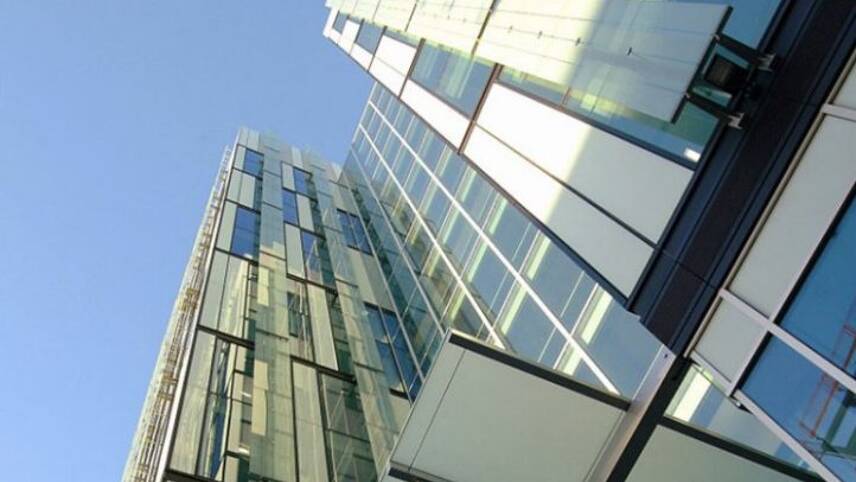Register for free and continue reading
Join our growing army of changemakers and get unlimited access to our premium content

Back in 2020, JLL research found that tenant demand for “highly sustainable” commercial buildings would increase at least eight million square feet by 2030
JLL’s new Green Leasing 2.0: Bridging the owner-occupier divide to deliver shared ESG value report has outlined the benefits that both landlords and tenants can generate through “green lease” clauses in contracts, which in turn will help decarbonise the real estate sector.
JLL’s research has found that 42% of investors and 34% of occupiers are currently implementing green clauses in lease contracts, with an additional 37% of investors and 40% of occupiers planning to enact green lease clauses by 2025.
In the US alone, which has 1.2 billion square feet of office space and 2.5 billion square feet of industrial space facing lease expirations before 2030, more than $3.3bn could be delivered in annual costs savings by introducing green leases, as estimated by the Institute for Market Transformation (IMT).
“Amid the current energy crisis and with increased pressure to meet sustainability goals, collaboration between the owner and occupier at an asset level to incorporate energy efficient solutions is critical. Existing leases, both green and non-green, do not allow this and a new model is needed with increased transparency and data sharing,” JLL’s global head of sustainability services Guy Grainger said.
Back in 2020, JLL research found that tenant demand for “highly sustainable” commercial buildings will increase at least eight million square feet by 2030.
JLL’s paper additionally sets out the financial benefits, beyond reputation or initial demand, of green office investment. Using data around leasing activity for new office buildings in central London for 2016-19, the report concludes that buildings with an ‘A’ or ‘B’ energy performance certificate (EPC) achieved a rental premium of 10%. Buildings with BREEAM ‘Very Good’ or higher certifications, meanwhile, saw a rental premium of 8%.
JLL analysed leasing activity for New Grade A office buildings in central London and found that those with a BREEAM rating of very good or higher achieved higher rents than those without a rating and that the average rental premium over non-rated buildings over the last three years was around 8%. The analysis also showed that New Grade A buildings with an A or B EPC rating achieved a rental premium of 10% over comparable offices with lower ratings over the same period.
Net-zero real estate
JLL has notably signed the World Green Building Council’s (WGBC) net-zero carbon buildings initiative, committing it to bring operational carbon emissions to zero by 2030.
Grainger noted that the company’s office fit-outs use 15% less energy than a standard code design which represents annual cost savings of more than $2m across the company’s portfolio.
At the start of 2023, eight businesses operating in the global real estate space pledged to cut the operational emissions of buildings in half by 2030, as part of a collective net-zero industry commitment orchestrated by the World Economic Forum (WEF).
Called the Green Building Principles, the initiative requires signatories to target net-zero carbon emissions by 2050 at the latest and to set an interim target to at least halve these emissions by 2030, against an appropriate baseline. This is in line with the global emissions trajectory that climate scientists say is necessary to give humanity the best chance of holding the global temperature increase below 1.5C. Signatories include JLL, Avison Young, Dubai-based retail and residential property developer Majid Al Futtaim Properties and lighting corporation Signify.
Beyond net-zero in the built environment
edie has published a new report looking at how the built environment sector can go further than merely decarbonising to reach net-zero, by focusing on a climate-positive approach to business.
For this latest report in this new series, edie will explore the drivers, challenges and opportunities when it comes to accelerating decarbonisation, along with the steps that can be taken to embrace a ‘net-positive’ philosophy.
The report has been created in assistance with Laing O’Rourke and features a foreword from BRE’s chief executive Gillian Charlesworth. It also uses exclusive results from edie’s Net-Zero Business Barometer, an in-depth online survey of hundreds of sustainability and energy professionals. This built environment report has also been produced with guidance from in-depth discussions with a steering panel of sustainability experts from some of the world’s most respected construction and built environment firms at edie’s SPARK event for sustainability and energy leaders in London in November 2022.
Click here to download the report.


Please login or Register to leave a comment.